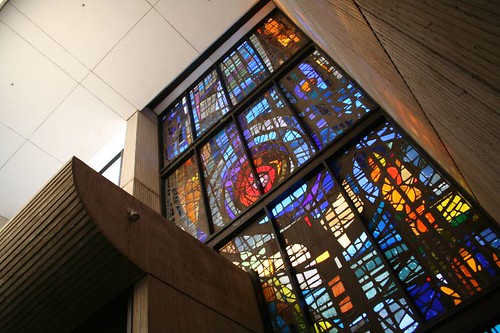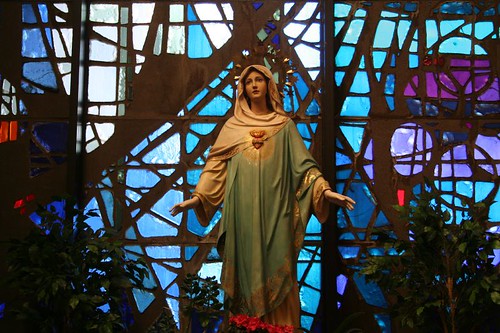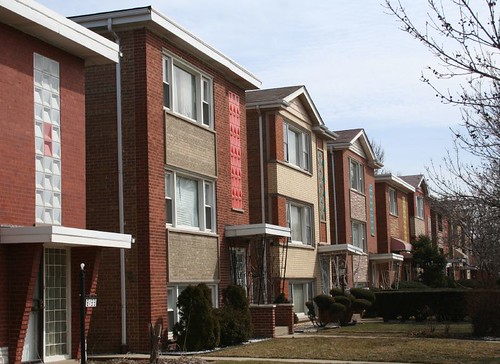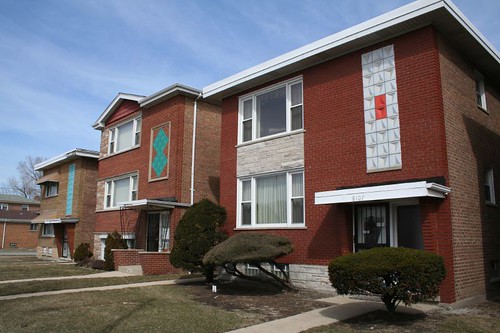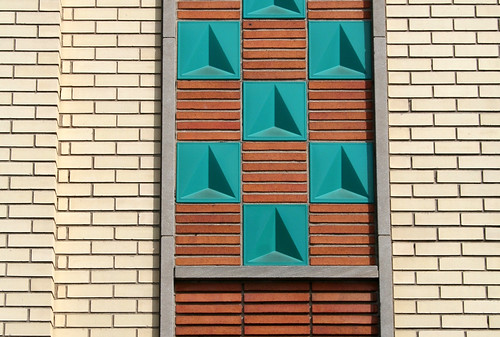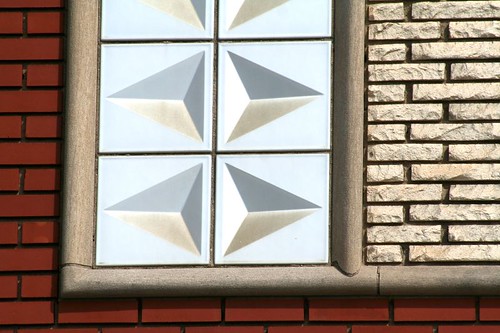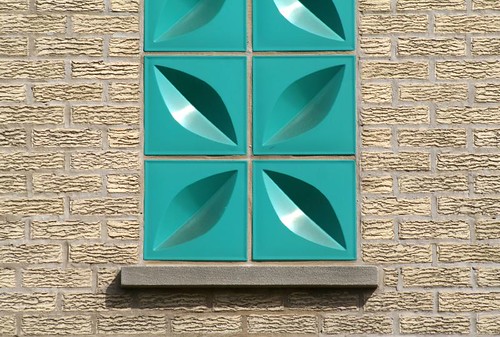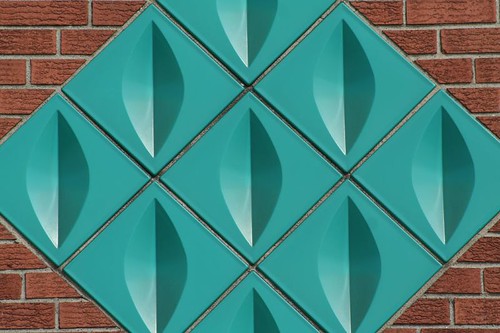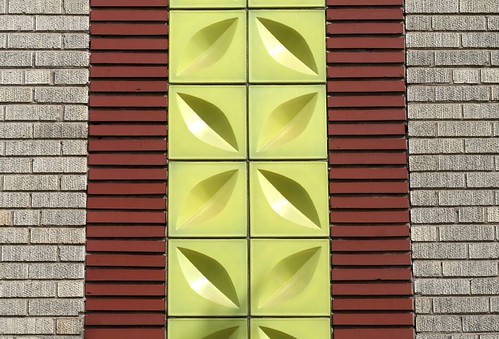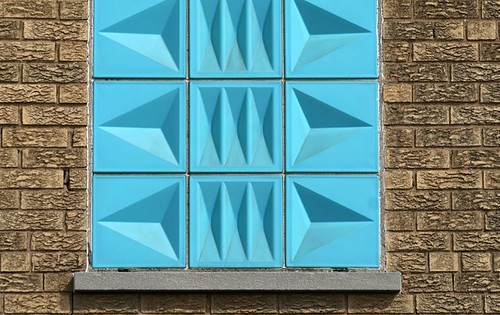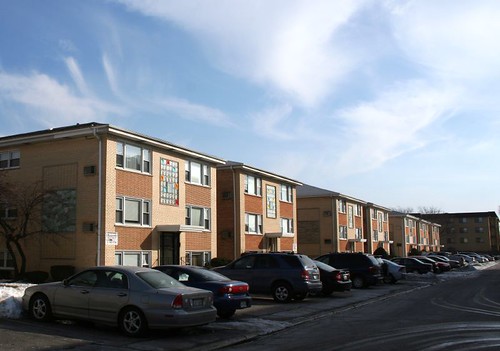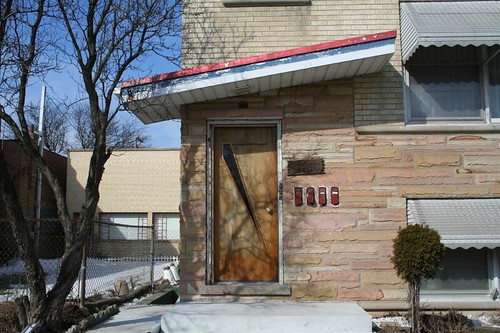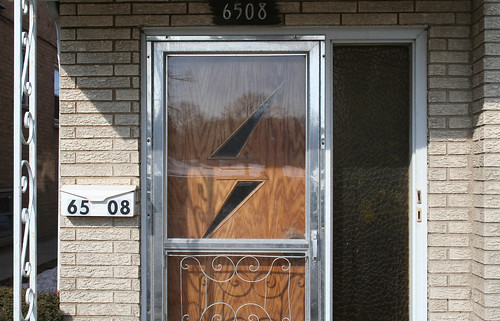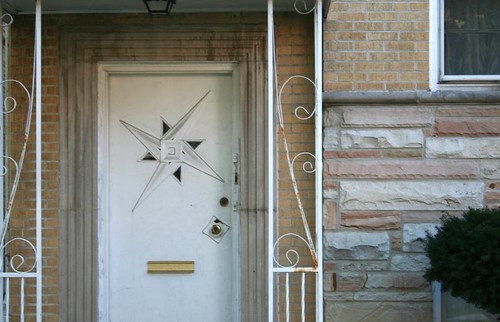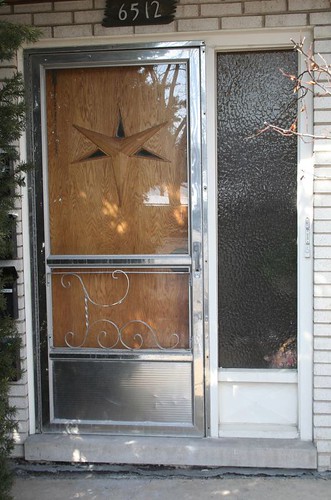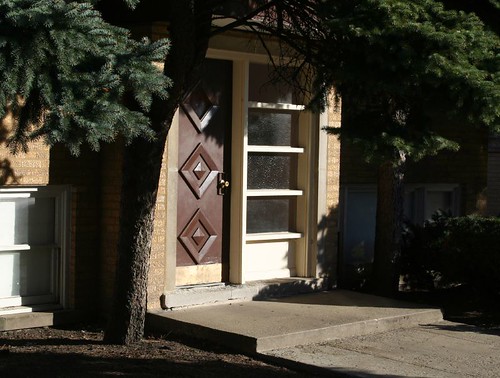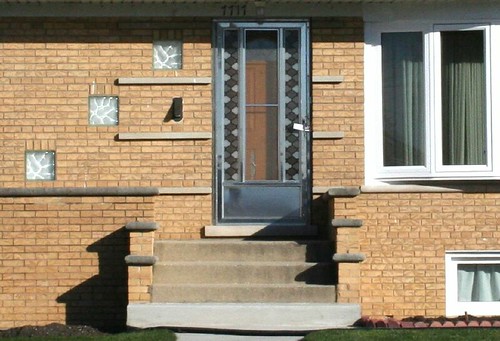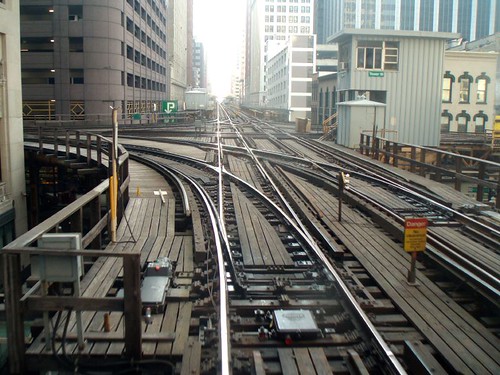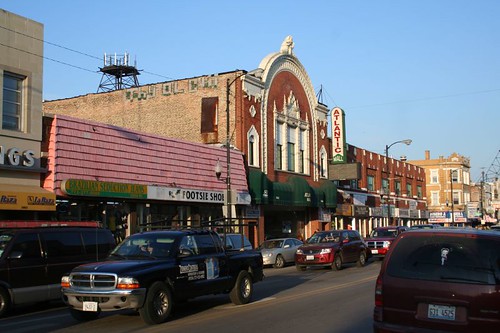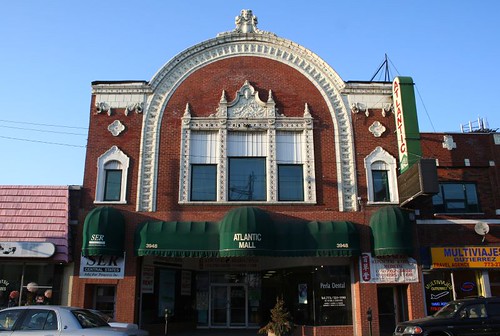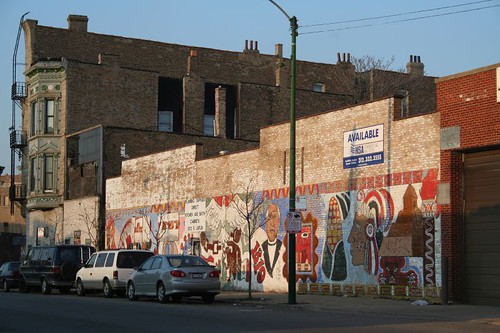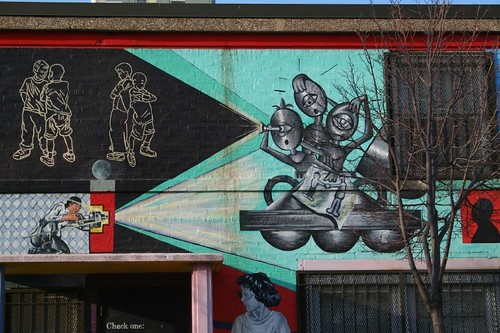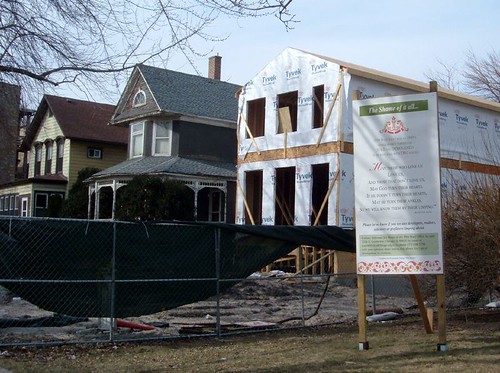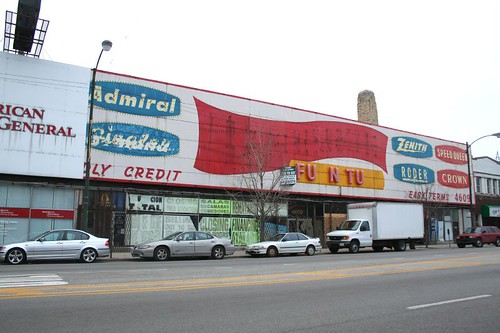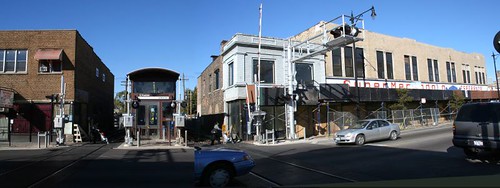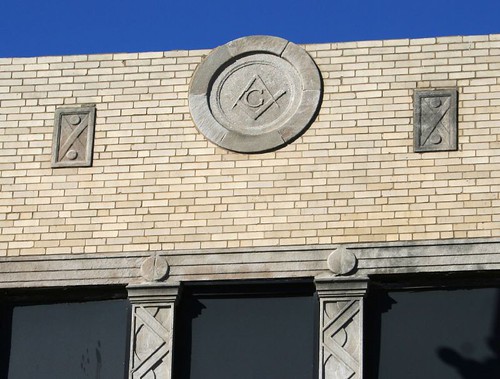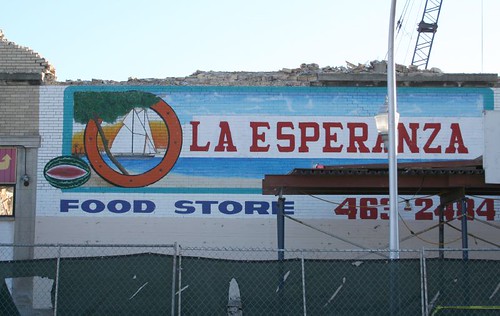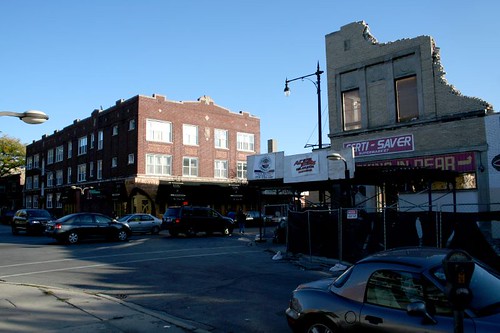The first is one of those buildings that's hidden in plain sight: St. Joseph's Hospital, easily visible from Lakeshore Drive across Lincoln Park, and somewhat famous for its marching walls of blue diamonds. Owing to my recurring inability to get out of the house early in the morning, I have yet to get a decent, sunlit view of the building's public eastern face, so here's a detail shot.

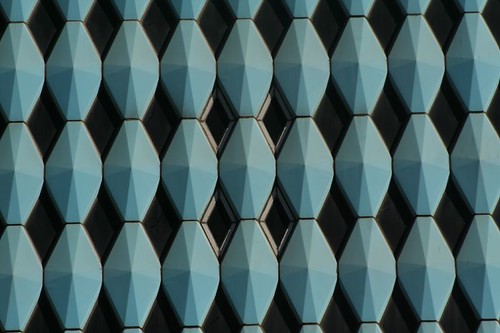
Within, the 11th floor Dan Ryan Memorial Chapel is a consummate piece of 1960s architecture.
The narrow wings of the Y-shaped hospital tower allow the chapel to have faceted glass walls its long sides.
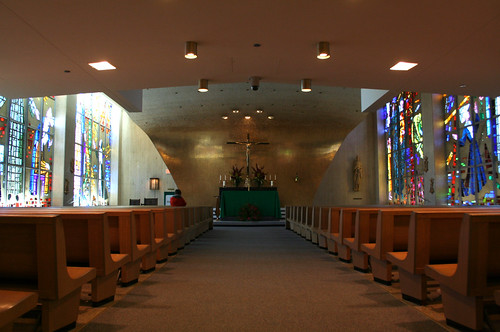
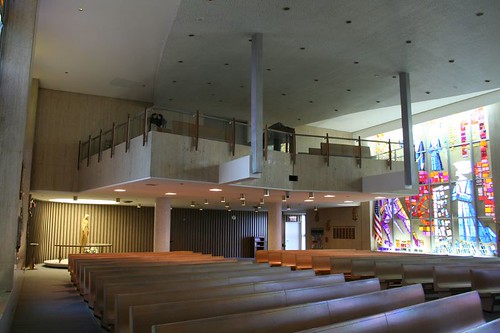
Various period details tie the place together, though careless addition of can lights and fire safety equipment have damaged the clean integrity of the design.
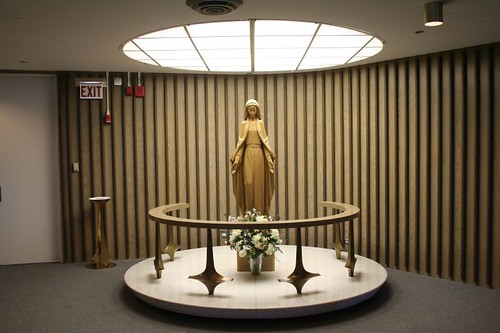
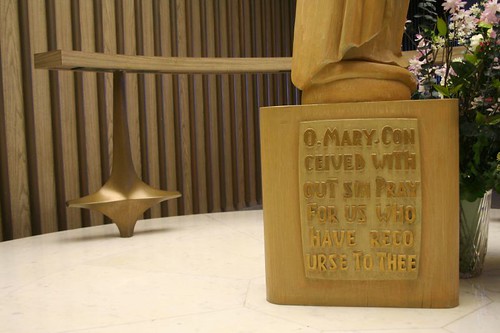

The second chapel is west of the Loop, out on W. Division Street, at the Saint Mary Campus medical center.
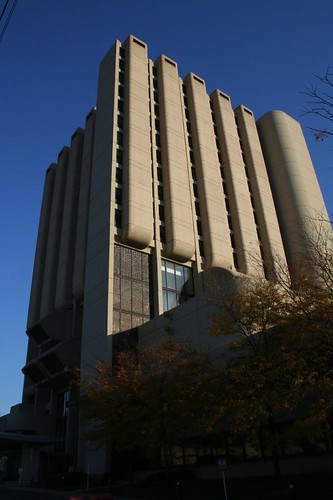
The chapel, located on the second story, is as Brutalist as the exterior of the building. Upon entering, I immediately dubbed it "Our Lady of Board-Formed Concrete". The design takes great advantage of the raw, rough-edged nature of the material.
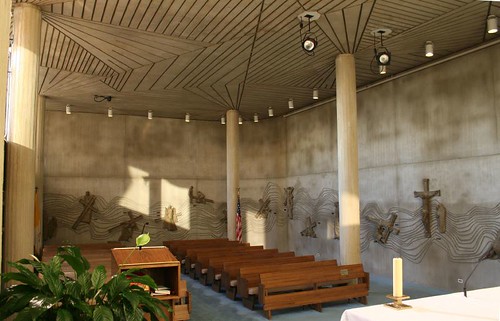

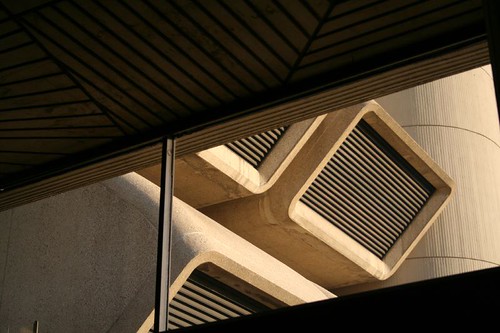
The late 1960s and early 1970s tended to be particularly brutal in their depictions of Jesus on the cross. The angular styles common to the time really played up the agony of the crucifixion.
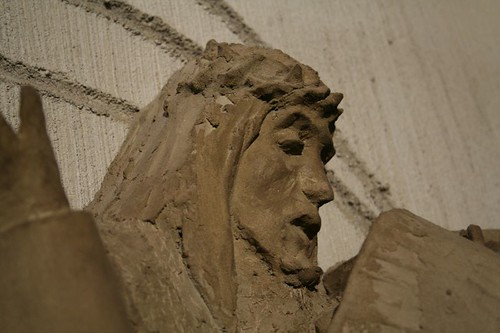
The chapel has a tall faceted glass window, but it's located outside the chapel itself. Stranger still, it's in a very narrow, high space where it can only be appreciated by standing beneath it and craning one's neck upwards.
